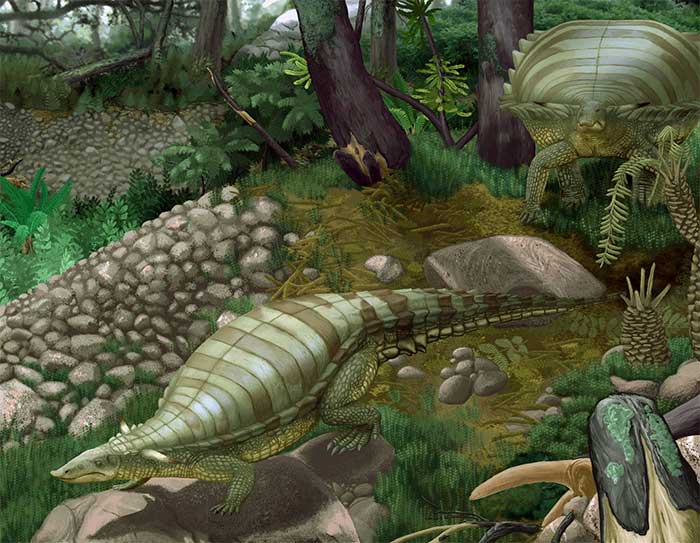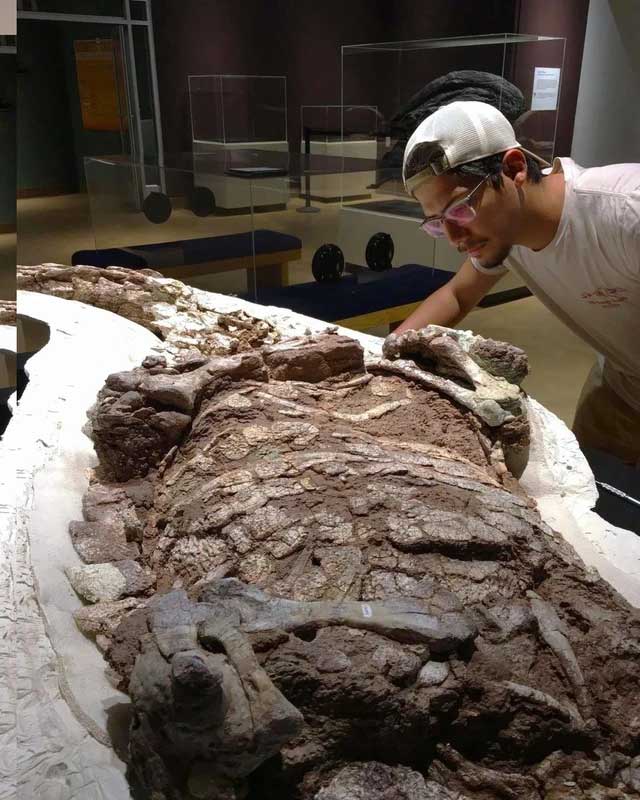A Mysterious Creature Found in Texas Has Confounded Scientists for Over 30 Years
A team of scientists led by paleontologist William Reyes from the University of Texas at Austin has identified a new species of Aetosaur.
Aetosaurs are a group of extinct armored reptiles closely related to crocodiles and distantly related to birds and dinosaurs. The name Aetosaur means “eagle lizard”, as their skulls resemble that of an eagle, according to Newsweek.

Appearance of the “eagle lizard” Texas creature when alive – (Graphic: SCI-NEWS).
The new species has been named Garzapelta muelleri, measuring up to 3.5 meters in length and inhabiting what is now Texas approximately 218 million years ago, during the Middle Triassic period.
Like other Aetosaurs, they were omnivorous but primarily herbivorous.
According to a paper published in The Anatomical Record, its fossilized remains were excavated in 1989 from the Cooper Canyon Formation in Garza County, Texas.
However, it was only recently identified as a completely new species, after scientists pointed out several unique characteristics of its armor that had never been seen in previously known Aetosaurs.
Nonetheless, the position of this species on the Aetosaur evolutionary tree remains controversial.
This creature also shares many similarities with two other Aetosaur species previously found in the Eagle Basin of Colorado, particularly the bony scale structure on its back, which provided it with armored protection.
The research team described it as resembling an American crocodile crossed with an armadillo, due to its formidable armor.

Huge armor studied in the lab – (Photo: William Reyes).
This armor features sharp spikes similar to those of Jurassic armored dinosaurs, which coexisted with Garzapelta muelleri.
This species, along with its Aetosaur relatives, is believed to have disappeared during the transition between these two geological periods, roughly 200 million years ago.
However, they laid the groundwork for later armadillos and other armored creatures.
The bony plates covering Aetosaurs are a form of bony scale, directly attached to the skin and interlocking like a mosaic. Additionally, Garzapelta muelleri possessed curved spikes along its flanks, providing enhanced protection against predators.
This new species was discovered quite unexpectedly, as scientists studying the armor had initially mistaken it for an armadillo or a known Aetosaur.
The armor had been part of the fossil collection at Texas Tech University for 30 years before it drew attention and led to the identification of a new species in the paleontological record.
According to the authors, research on organisms from this transitional period will provide important data regarding the evolution of armor in reptiles in later eras.
The emergence of the Texas creature indicates that this area once witnessed a burst of diversity among Aetosaurs.
During the Triassic period, it was part of the fragmented supercontinent Pangaea, a humid region that was home to many ancient crocodile species, according to the Museum of Paleontology at the University of California.


















































